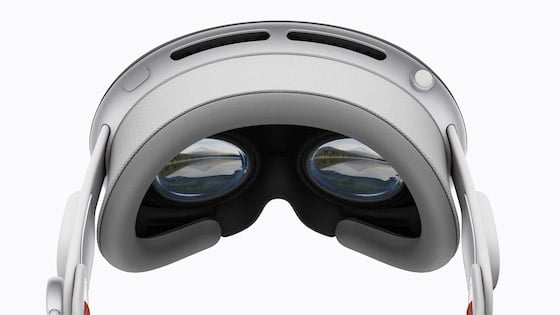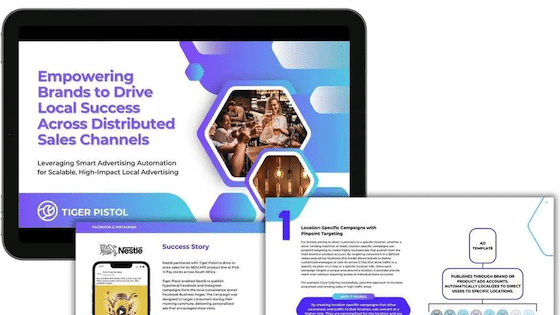After a decade of rumors and billions in R&D… and then seven months of seeing pictures and pro reviews of the device, Apple Vision Pro is available today in the U.S. There are of course mixed feelings, mostly stemming from its cost-prohibitive $3,500 entry price, and other standard haters-gonna-hate fare.
In a similar sense, since Apple unveiled the device in June, the interweb has been clogged with wannabe punditry. Everyone has an opinion and is suddenly an expert on AR and spatial computing. As we wrote at the time, beware of analysis from anyone who hasn’t touched the device, or isn’t versed in AR.
So why should you listen to us? We haven’t worn the device, but are quite versed in AR. For example, I founded an AR research firm and trade pub in 2017, and have operated it since then as a side hustle. Based on these qualifications, we’ll stick to AR market positioning versus specs-level hardware review.
With that backdrop, what is Vision Pro? Who’s it meant for? And how does it fit into Apple’s future-proofing plan for its hardware business? The TLDR version is that Apple, true to form, is playing a long game. Don’t dwell on AVP and its price tag, but rather its role in a signature Apple product lifecycle.
Or as WSJ’s Joanna Stern put it in her pre-launch review:
The Vision Pro has every characteristic of a first-generation product. It’s heavy, it’s battery life sucks, there aren’t that many great apps yet, and sometimes it’s buggy. But when you imagine a device without those constraints, you see where it could be better than holding a phone to your face. For now, it gives you a pretty great way to work and watch movies. Is that worth $3,500? That’s between you and your bank account. But in those 24 hours, i could see apple’s future vision here. A pixelated and, yes, a little distorted glimpse of it, that is…

Historical Evidence
Starting with that price point, It’s been the most contentious point. Back to all those breathless editorials from AR noobs, no one cares about your proclamations that you won’t be buying it, including Apple. This device isn’t for you. It’s to plant a flag in the sand for a first-generation device… Apple’s way.
This approach requires demonstrating what’s possible at any cost, then refining through several generations to lower cost and boost capability. Meanwhile, the device will carry Apple’s signature exclusivity vibe, with scarcity dictated by a demand-constraining price (and supply-chain bottlenecks).
This period of artificially-engineered elite status will drive the device’s cachet for several successive generations. This reminds us of Tesla’s strategy. It was cost-prohibitive at first, endowing a certain elite status. When the price came down and supply went up, a flood of built-up demand fueled years of sales.
Perhaps a better example is Apple itself. As Localogy president Bill Dinan pointed out when AVP was unveiled back in June, early Apple computers were also exorbitantly priced. I dug deeper to find that an Apple 2 with 48k of RAM was initially US$2,638 which is the equivalent of $12,739 in today’s dollars.
Further supporting the theory behind an elite/exclusive product persona, it’s already evident that the Vision Pro sales process will embody the same vibes. It will be a sort of “velvet rope” experience, requiring an appointment – sort of like the way you buy high-end jewelry or, again, a new Tesla.

Political Capital
Speaking of jewelry, AVP fits into another key factor: wearables. Stepping back, Apple’s game plan these days is all about revenue diversification. As global smartphones reach maturity and revenue deceleration, Apple has to find other ways to maintain growth – a tall order considering its revenue base.
The answer to that dilemma so far has been two things: wearables and services. For wearables, revenue growth each quarter comes close to counterbalancing the declining growth for the iPhone. For that reason, wearables hold a great deal of importance and political capital in Cupertino.
AVP fits right into wearables in that it supplements the sensory experiences in Watch and AirPods. Visuals now join spatial audio and Watch-driven biometrics (think: immersive fitness). And Apple’s signature ARPU-boosting ecosystem approach will rule… own all devices for continuity and synergy.
For services, which include entertainment like AppleTV+, AVP is positioned as an elite and immersive consumption experience. This was one of Apple’s biggest points of emphasis in the AVP unveiling, including massive virtual screens (Apple finally developed a TV), and serine viewing environments.
Moreover, Apple will cultivate a use case around sports, including courtside seats for 180-degree immersive viewing. These dots can be connected if you look at its acquisition of NextVR, as well as its MLS streaming rights. It will sell front-row seats for A/V-rich immersive viewing across various sports.

Master Plan
Sticking with that sports use case, think of watching hockey in a front-row seat, with the visceral sights and sounds of players colliding into the boards in front of you. And you’ll be able to pick from several vantage points. For some fans, a $9 ticket or larger season pass, beats the all-in price of IRL attendance.
The beauty of that $9 virtual hockey ticket is also that it scales. It eliminates supply constraints in any given sport, including proximity and venue size. And this is the type of scalable revenue that Apple needs to counterbalance iPhone revenue deceleration. Its size means that it has to shoot for massive targets.
In similar ways, AVP will accelerate or initiate other industry disruptions. Beyond entertainment, that includes healthcare, enterprise productivity, communications, social interaction, and fitness. Several others will follow – some already mapped in Apple’s master plan, and others to be discovered.
In the meantime, Vision Pro has gotten a decent start, with 200,000 units sold in pre-orders according to reliable estimates. Though that’s nowhere near iPhone scale (the iPhone didn’t sell at iPhone scale in its first week either), it has eclipsed all analyst estimates and has meaningful momentum as of this week.
Will we put our money where our mouths are and buy one? As I noted in the latest episode of This Week in Local, I’m struggling with owning V1 versus waiting for v2. In the meantime, we’ll book an appointment at the closest Apple store for one of those fancy demos. Do the same and let us know what you think.



